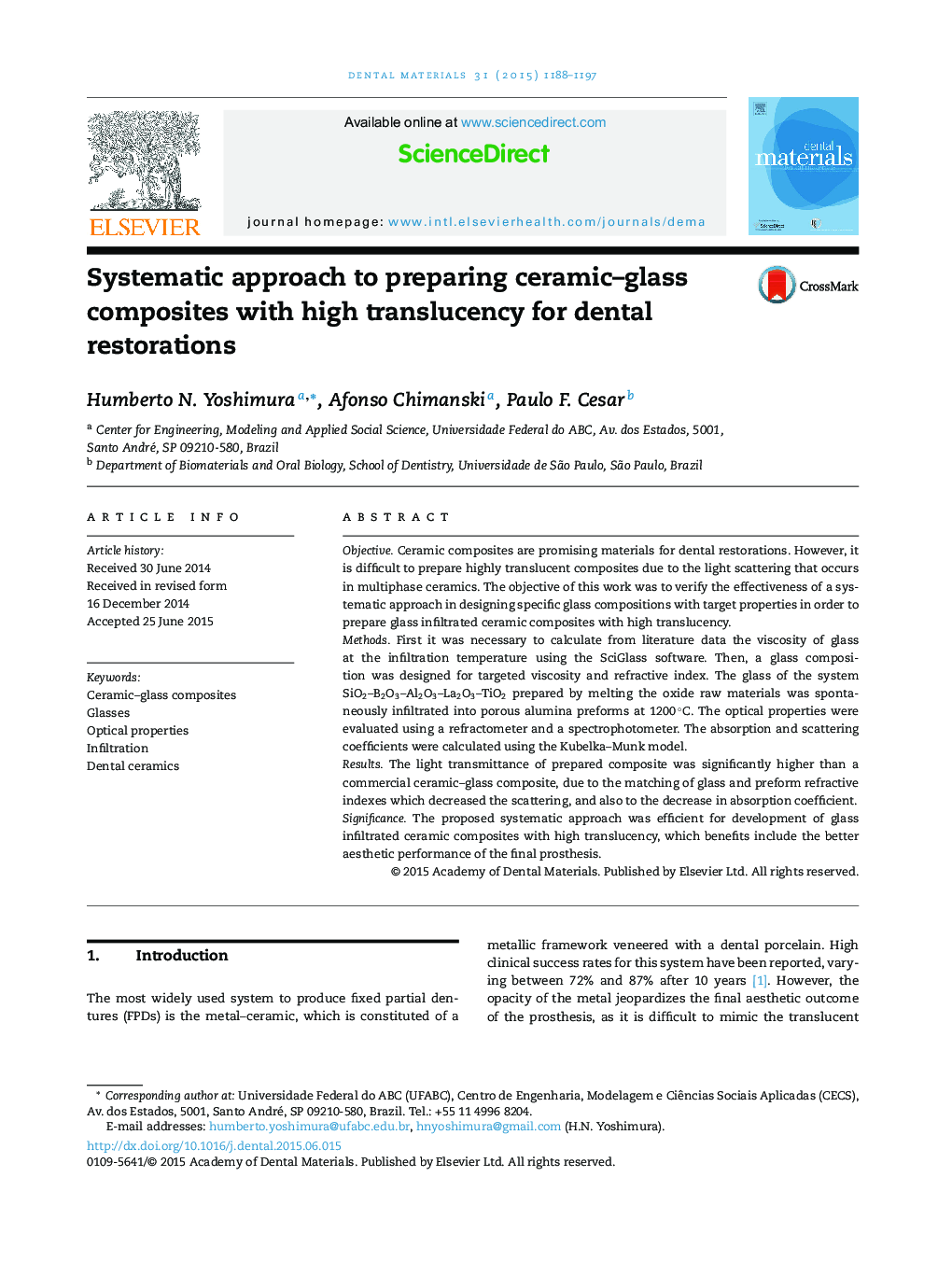| کد مقاله | کد نشریه | سال انتشار | مقاله انگلیسی | نسخه تمام متن |
|---|---|---|---|---|
| 1420535 | 986370 | 2015 | 10 صفحه PDF | دانلود رایگان |
• Software SciGlass can be used for determination of processing parameters and to design glass compositions with target properties.
• Glasses of the system SiO2–B2O3–Al2O3–La2O3–TiO2 with high refractive indexes and low viscosities can be prepared based on predictions obtained by SciGlass.
• Matching the refractive indexes of glass and ceramic preform is crucial to decrease light scattering in ceramic composites.
• It is also important to decrease the absorption phenomena to produce composites with high translucency.
• The proposed systematic approach was successfully applied to develop glass infiltrated ceramic composite with high light transmittance.
ObjectiveCeramic composites are promising materials for dental restorations. However, it is difficult to prepare highly translucent composites due to the light scattering that occurs in multiphase ceramics. The objective of this work was to verify the effectiveness of a systematic approach in designing specific glass compositions with target properties in order to prepare glass infiltrated ceramic composites with high translucency.MethodsFirst it was necessary to calculate from literature data the viscosity of glass at the infiltration temperature using the SciGlass software. Then, a glass composition was designed for targeted viscosity and refractive index. The glass of the system SiO2–B2O3–Al2O3–La2O3–TiO2 prepared by melting the oxide raw materials was spontaneously infiltrated into porous alumina preforms at 1200 °C. The optical properties were evaluated using a refractometer and a spectrophotometer. The absorption and scattering coefficients were calculated using the Kubelka–Munk model.ResultsThe light transmittance of prepared composite was significantly higher than a commercial ceramic–glass composite, due to the matching of glass and preform refractive indexes which decreased the scattering, and also to the decrease in absorption coefficient.SignificanceThe proposed systematic approach was efficient for development of glass infiltrated ceramic composites with high translucency, which benefits include the better aesthetic performance of the final prosthesis.
Journal: Dental Materials - Volume 31, Issue 10, October 2015, Pages 1188–1197
